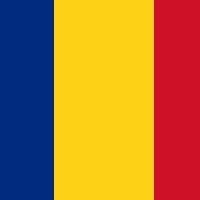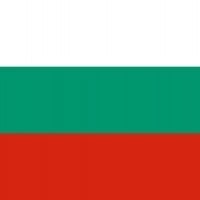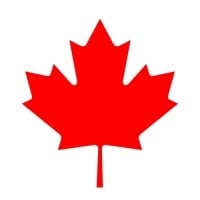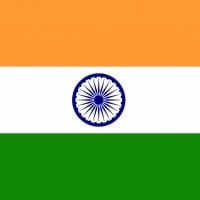Most Powerful Countries In 1914
Which powers were the most powerful in 1914, on the onset of WW1? Please only answer if you are knowledgeable in world affairs during this time period.Britain would no doubt win a one-on-one war against any country in the world at the time. They were one of the most stable countries. They had the strongest navy in the world. Their industry was first or second in the world, and their positioning in the world is perfect.
If it would go to war with a country, all it would have to do is put their ships on their coast and wait for them to economically collapse.
The British Empire was an insanely powerful country, easily number one. When it comes to a war of attrition, Britain is unmatched. When it comes to a navy, Britain is unmatched. When it comes to the economy, Britain is (near) unmatched.
The German Empire had the largest, most modern, and powerful land army in Europe. It also had the second-largest population and navy. The German Empire fought on two fronts, with two out of its three allies being incompetent (Bulgaria was okay), and still nearly won. This is more impressive than you might think, considering they fought against the most populous European country on one side (Russia) and the most powerful country in the world, plus the country with the second-most modern army (Britain and France).
They had the most powerful land army at the time, even able to outmatch Russia. However, I think they would have needed about 20-40 more years to become number 1.
 The United States of America, or the U.S.A. for short, is a federal republic composed of 50 states, 48 of them are contiguous states. There are two other states, Alaska and Hawaii, which are north and south of the contiguous states, respectively. The United States declared its independence from the... read more
The United States of America, or the U.S.A. for short, is a federal republic composed of 50 states, 48 of them are contiguous states. There are two other states, Alaska and Hawaii, which are north and south of the contiguous states, respectively. The United States declared its independence from the... read more It wasn't just 10,000 men. It was 150,000 before World War II. Plus, this is 1914, not 1941. World War I, not World War II. Plus, the army before we entered World War I was around 400,000 before President Woodrow Wilson ordered an increase to 800,000 and allowed conscription in 1913 due to political tensions rising in Europe between Austria-Hungary and Serbia.
And what's all this about us being weak before World War II anyway? Our economy had recovered from the Great Depression and was the best in the world. Our Navy was also the biggest, with Great Britain just a little further ahead. Our country is several dozen times bigger than Germany or France, even with their empires. We were smaller than the British Empire and the Soviet Union, but most of Russia is a barren wasteland, and oil around India, the Arabian Peninsula, and Africa hadn't even been discovered yet. Our entry into the war turned the tide in both World War I and World War II.
They had a large, well-trained, and well-equipped army and navy with the industry and population to back it. They also had an extremely powerful air force for the time. I don't get how they are not number 2, let alone behind the US, who were pathetically weak.
France didn't have a small, weak army like the Brits. It was giant. They were also very well-trained. They also did great in about the worst position in the world.
France should be ranked number 3. I can tell they had a well-trained army, and their generals had better strategies. They were powerful at the time.
The Austro-Hungarian Empire was incredibly powerful. However, due to literally all of its enemies having significantly better generals, it had led to many stalemates. Still, though, it proved itself nothing to mess with by disintegrating Russia's army in 1914, winning (with some help) the battle at Caporetto, repelling 11 different Italian attacks at the Isonzo River, and making the enemy run away scared at the Battle of the Otranto Strait.
There was much help needed on many fronts, and Austria-Hungary's K/D resembles that of a 3-year-old playing GTA. Austria-Hungary proved itself as one of the most powerful empires.
The Japanese had taken Taiwan, Port Arthur, and Korea during a war with China in 1894-1895 and also defeated Russia during the Russo-Japanese War (1904-1905). The Japanese were at this stage a dominant force in the Pacific, militarily-oriented, and had a booming labor force.
Yes, Japan lacked a lot to make them the best. But they had a great navy and good force overall. Japan in the 1890s captured some of China, Taiwan, and Korea. They could easily crush the German navy in the Pacific since they took down Germany's colonies in the Pacific. Japan was also a naval superpower.
The Ottoman Empire was in a state of decay, with virtually no air force, a navy that was highly ineffective, and significant territorial losses in recent decades. However, the Ottoman Empire proved to be a formidable opponent, with superior generals and armies. After standing unfazed by the Gallipoli campaign and making a mockery of the British captors of Kut, it's easy to say that the Ottoman Empire, being the weakest of the three, pulled its weight. Thus, a vote for the Ottoman Empire for the #6 spot is well earned.
The population is insane for the time, and 5,000,000 manpower is also insane. However, their industrial and supply line issues are very bad.
Still, because of manpower alone, I think they should be ranked as number 5.
The Russians had established the largest country the world has ever seen, dominating lands from northeast Asia to Eastern Europe. Their economy was flourishing, and their productivity was also high, though it was very backward compared to other European powers after centuries of Tsarist rule.
 Italy (Italian: Repubblica Italiana) is a sovereign state and unitary parliamentary republic in south-central Europe.
Italy (Italian: Repubblica Italiana) is a sovereign state and unitary parliamentary republic in south-central Europe.Italy covers an area of 301,338 km². With almost 62 million inhabitants, it is the third most populous EU member state. Located in the heart of the Mediterranean Sea, Italy shares... read more
In 1914, Italy had already conquered Libya. In the four years 1914-1918, the belligerent nations produced a total of over 195,000 aircraft and flying boats of all kinds. Italy alone produced over 12,000 airplanes, most of Russia and Austria-Hungary combined. Italy was the first nation in the world to use airplanes during World War I.
Enough with this nonsense about Italy as a "new country". Germany was born in 1871, 10 years after the birth of the Kingdom of Italy. Italy is much more ancient than its official birth date reveals.
Italy was a relatively new country and lacked an empire. Its production was extremely low compared to Germany and France.
 Romania is a sovereign state located in Southeastern Europe It borders the Black Sea, Bulgaria, Ukraine, Hungary, Serbia, and Moldova. It has an area of 238,391 square kilometres and a temperate-continental climate. With over 19 million inhabitants, the country is the seventh-most-populous member state... read more
Romania is a sovereign state located in Southeastern Europe It borders the Black Sea, Bulgaria, Ukraine, Hungary, Serbia, and Moldova. It has an area of 238,391 square kilometres and a temperate-continental climate. With over 19 million inhabitants, the country is the seventh-most-populous member state... read more Romania was able to hold off three armies as well as make huge advances. It easily beat back the Central Powers when it started to get cornered. It took three armies to do it, and it didn't even fully work.
The Romanian military overall was a force of havoc. It earned the name "home of defense" by many soldiers from both sides. Most notably, the Russian soldiers called it this the most.
 Australia, officially the Commonwealth of Australia, is a sovereign country comprising the mainland of the Australian continent, the island of Tasmania, and numerous smaller islands. With an area of 7,617,930 square kilometres (2,941,300 sq mi), Australia is the largest country by area in Oceania and... read more
Australia, officially the Commonwealth of Australia, is a sovereign country comprising the mainland of the Australian continent, the island of Tasmania, and numerous smaller islands. With an area of 7,617,930 square kilometres (2,941,300 sq mi), Australia is the largest country by area in Oceania and... read more Monash - combined arms, fire, and maneuver. One of the most important figures in modern combat history. Late in the war, the Australians and Americans under his command showed how set defenses could be defeated without hideous casualty figures.
If you think the Japanese were powerful, we were the first to send them back.
 Bulgaria, officially the Republic of Bulgaria, was established in 681 ad. and since then it never changed it's name, which makes it one of the oldest countries in Europe. Located in the Balkan Peninsula between Greece, Turkey, Romania, Serbia, Macedonia and Black Sea. The Capital of Bulgaria is Sofia,... read more
Bulgaria, officially the Republic of Bulgaria, was established in 681 ad. and since then it never changed it's name, which makes it one of the oldest countries in Europe. Located in the Balkan Peninsula between Greece, Turkey, Romania, Serbia, Macedonia and Black Sea. The Capital of Bulgaria is Sofia,... read more Y'all are sleeping on Bulgaria. They did really well against Greece and fully collapsed Serbia. They were definitely the strongest of the small Balkan states.
The Kingdom of Bulgaria participated in World War I on the side of the Central Powers from 14 October 1915, when the country declared war on Serbia, until 30 September 1918, when the Armistice of Thessalonica came into effect.
I think they fought very well against Serbia.
 Canada is a country in North America that is next to the United States, and it's the 2nd largest country in the world by area (size is 9.985 million km²). This country has 10 provinces, and 3 territories. Canada became a dominion on July 1, 1867. Its 10 provinces are: Ontario, British Columbia, Quebec,... read more
Canada is a country in North America that is next to the United States, and it's the 2nd largest country in the world by area (size is 9.985 million km²). This country has 10 provinces, and 3 territories. Canada became a dominion on July 1, 1867. Its 10 provinces are: Ontario, British Columbia, Quebec,... read more At one point, after World War II, Canada had the fourth-largest military in the world. Sure, our military is pathetically small for a country of our size, but we still make a great impact on the world today.
Why are we fourteenth? Sure, we had a small army, but we had the best.
The Canadians and some other Commonwealth countries created all-arms warfare, and they were much feared.
 Spain, or the Kingdom of Spain, is a country in southwestern Europe with parts of territory in the Atlantic Ocean and across the Mediterranean Sea. The largest part of Spain is situated on the Iberian Peninsula; its territory also includes the Canary Islands in the Atlantic Ocean, the Balearic Islands... read more
Spain, or the Kingdom of Spain, is a country in southwestern Europe with parts of territory in the Atlantic Ocean and across the Mediterranean Sea. The largest part of Spain is situated on the Iberian Peninsula; its territory also includes the Canary Islands in the Atlantic Ocean, the Balearic Islands... read more Spain had a decent army that was pretty average but had a very good navy.
 Belgium, officially the Kingdom of Belgium, is a country in Northwestern Europe. The country is bordered by the Netherlands to the north, Germany to the east, Luxembourg to the southeast, France to the southwest, and the North Sea to the northwest. It covers an area of 30,689 km2 (11,849 sq mi) and... read more
Belgium, officially the Kingdom of Belgium, is a country in Northwestern Europe. The country is bordered by the Netherlands to the north, Germany to the east, Luxembourg to the southeast, France to the southwest, and the North Sea to the northwest. It covers an area of 30,689 km2 (11,849 sq mi) and... read more Belgium is actually severely underestimated during this period because they didn't stand up to Germany. However, they had a huge industrial capability for their size, notably in steel, a relatively large army, and large overseas possessions in the Congo. They were considered close enough to a great power to receive concessions in China after the Boxer Rebellion.
Belgium had a pretty good industry and a large population for its size. They also had a pretty decent army that was well-equipped.
 China, officially the People's Republic of China, is a country in East Asia. It is the world's most populous country, with a population of more than 1.4 billion. China spans five geographical time zones and borders 14 countries, the second most of any country in the world after Russia. Covering an area... read more
China, officially the People's Republic of China, is a country in East Asia. It is the world's most populous country, with a population of more than 1.4 billion. China spans five geographical time zones and borders 14 countries, the second most of any country in the world after Russia. Covering an area... read more The Chinese had suffered after years of European dominance and were still very unstable. However, the Chinese did have a considerable labor force.
 India, officially the Republic of India, is a country in South Asia. It is the seventh-largest country by area, the second-most populous country (with over 1.2 billion people), and the most populous democracy in the world. Its capital is New Delhi. Some other major cities are Mumbai, Chennai, and Ahemdabad... read more
India, officially the Republic of India, is a country in South Asia. It is the seventh-largest country by area, the second-most populous country (with over 1.2 billion people), and the most populous democracy in the world. Its capital is New Delhi. Some other major cities are Mumbai, Chennai, and Ahemdabad... read more Although not independent, India played a very important part in World War I. British Raj (or British India) was called "The Jewel in the Crown of the British Empire" for a very good reason. India was Britain's most populous colony. It helped fuel the empire economically. During the war, it helped supply troops in Africa, the Middle East, and Europe with food and supplies. Thousands of Indians died in Africa and the Middle East fighting the Ottomans and Germans.
India provided a lot of troops and supplies during both World Wars.
 Serbia, officially the Republic of Serbia, is a landlocked country in Southeastern and Central Europe, situated at the crossroads of the Pannonian Plain and the Balkans. It shares land borders with Hungary to the north, Romania to the northeast, Bulgaria to the southeast, North Macedonia to the south,... read more
Serbia, officially the Republic of Serbia, is a landlocked country in Southeastern and Central Europe, situated at the crossroads of the Pannonian Plain and the Balkans. It shares land borders with Hungary to the north, Romania to the northeast, Bulgaria to the southeast, North Macedonia to the south,... read more Serbia was fast-growing after the first Balkan war, even more so than Bulgaria. They were able to hold off one of Europe's greatest powers for years, despite their size.
The Serbians had bravery and were willing to fight to the end. That makes them a formidable force.
 Greece, officially the Hellenic Republic, is a country in Southeast Europe. It is situated on the southern tip of the Balkans, and is located at the crossroads of Europe, Asia, and Africa. Greece shares land borders with Albania to the northwest, North Macedonia and Bulgaria to the north, and Turkey... read more
Greece, officially the Hellenic Republic, is a country in Southeast Europe. It is situated on the southern tip of the Balkans, and is located at the crossroads of Europe, Asia, and Africa. Greece shares land borders with Albania to the northwest, North Macedonia and Bulgaria to the north, and Turkey... read more Greece was one of the main causes of Ottoman defeat in the First Balkan War, and unlike Serbia, they were on the offensive in the Second Balkan War and were more successful than the Serbian Army. It was also the only Balkan military with a formidable navy (Greece had a navy comparable to that of the Ottomans) and was also technologically the most advanced Balkan military in World War I. Its only downside is its small size.
Greece had a very good army that was well-trained, and one can argue it was the best country in mountain warfare. It also had a great navy and dominated the east of the Mediterranean.
 Brazil, officially the Federative Republic of Brazil, is the largest country in both South America and Latin America. At 8.5 million square kilometers (3,300,000 sq mi) and with over 214 million people, Brazil is the world's fifth-largest country by area and the sixth most populous. Its capital is Brasília,... read more
Brazil, officially the Federative Republic of Brazil, is the largest country in both South America and Latin America. At 8.5 million square kilometers (3,300,000 sq mi) and with over 214 million people, Brazil is the world's fifth-largest country by area and the sixth most populous. Its capital is Brasília,... read more Brazil had some amazing ships and was able to produce lots of building materials, sugar, coffee, etc. They also had a good military.
Brazil, although having a small industry, can build it up very fast and has a huge population to train.
 Sweden, officially the Kingdom of Sweden, is a Scandinavian country in Northern Europe.
Sweden, officially the Kingdom of Sweden, is a Scandinavian country in Northern Europe.It borders Norway to the west and Finland to the east, and is connected to Denmark in the southwest by a bridge-tunnel across the Öresund. At 450,295 square kilometers (173,860 sq mi), Sweden is the third-largest... read more
Sweden was so great we did not lose a single battle during the war.
 The Netherlands, informally Holland, is a country located in north-western Europe with overseas territories in the Caribbean. It is the largest of four constituent countries of the Kingdom of the Netherlands. The Netherlands consists of twelve provinces, and borders Germany to the east, Belgium to the... read more
The Netherlands, informally Holland, is a country located in north-western Europe with overseas territories in the Caribbean. It is the largest of four constituent countries of the Kingdom of the Netherlands. The Netherlands consists of twelve provinces, and borders Germany to the east, Belgium to the... read more Neutrality and not having a large landmass in Europe made the Netherlands look less powerful than they actually were worldwide.
They had a great navy and a globally spanning empire. They certainly had the capability to win a war.
At the time, the Dutch Empire (other countries are also including colonies in the list) was way bigger than the Ottoman Empire, Italy, Japan, and Canada. It had approximately 51 million inhabitants and huge economic power. But as they remained neutral, they are perhaps overlooked in this list.
The Persian army in the Qajar era was quite strong. The main weapon in the army was an old rifle. They rode horses. They fought many wars and consumed a lot of their strength during the Qajar-British wars, the Russo-Persian, and Ottoman-Persian wars. Two million Persians died during the First World War. Against the Ottomans, Persia was against both the Allies and the Axis in the war.
 Norway, officially the Kingdom of Norway, is a sovereign and unitary monarchy in Northern Europe whose territory comprises the western portion of the Scandinavian Peninsula plus the island Jan Mayen and the archipelago of Svalbard... read more
Norway, officially the Kingdom of Norway, is a sovereign and unitary monarchy in Northern Europe whose territory comprises the western portion of the Scandinavian Peninsula plus the island Jan Mayen and the archipelago of Svalbard... read more